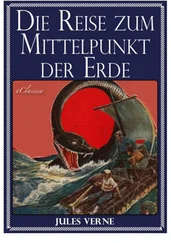Жюль Верн
Пятнадцатилетний капитан / Dick Sand. A Captain at Fifteen. Уровень 2
Jules Verne
Dick Sand: A Captain at Fifteen
© ООО «Издательство АСТ», 2021
© Матвеев С.А., подготовка текста, комментарии, упражнения, словарь
On the 2nd of February, 1873, the “Pilgrim”, a schooner, the property of James Weldon [1] James Weldon – Джеймс Уэлдон
, a wealthy Californian ship-owner, was ready for the whale-fisheries [2] whale-fisheries – охота на китов
in the southern seas.
Every season James Weldon sent his whalers both to the Arctic regions beyond Behring Straits [3] Behring Straits – Берингов пролив
, and to the Antarctic Ocean below Tasmania and Cape Horn [4] Cape Horn – мыс Горн
. The “Pilgrim” was onae of the best vessels of its class.
Captain Hull [5] Captain Hull – капитан Гуль
, an experienced seaman, was one of the most dexterous harpooners. The crew consisted of five sailors and an apprentice. In New Zealand, from the seamen of every nationality, and of needy emigrants, the captain could engage as many whalemen as he wanted for the season. The “Pilgrim” was on its way back. The time, indeed, for a good haul was past; the repeated and vigorous attacks upon the cetaceans made them very scarce.
The season was exceptionally unfortunate for the “Pilgrim.” At the beginning of January, Captain Hull abandoned his fishing-quarters [6] fishing-quarters – место охоты
. His men had doubtful character and showed the signs of insubordination. The “Pilgrim” was directed to the north-west, towards New Zealand. On the east coast of North Island, the whole of the gang was discharged.
The ship’s crew were very dissatisfied. They were angry. Their haul was meagre. They wanted two hundred barrels more. The rascals marred the success of the expedition.
Captain Hull made every effort to engage a fresh gang; but it was too late. He was leaving Auckland, alone with his crew, when he met a request.
James Weldon brought with him his wife, his son Jack, a child of five years of age, and a relative – Cousin Benedict. They wanted to accompany Weldon on his return home to San Francisco; but little Jack was seriously ill. His father’s affairs demanded his immediate return, so he left Jack at Auckland with Mrs. Weldon and Cousin Benedict.
In three months, Mrs. Weldon was anxious to get home as soon as possible. When she heard that her husband’s vessel, the “Pilgrim”, was at Auckland, she begged Captain Hull to take her with her little boy, Cousin Benedict, and Nan, an old negress, on board the “Pilgrim”. Captain Hull gave his consent. Moreover, the captain gave Mrs. Weldon his own cabin. Everything promised well for a prosperous voyage.
Mrs. Weldon herself accompanied her husband in many voyages, and she was not afraid of a seafaring life. She was a brave, high-spirited woman of about thirty years of age, of excellent health, and for her the sea had no terrors. She knew that Captain Hull was an experienced man, in whom her husband had the utmost confidence.
Cousin Benedict accompanied her. He was about fifty. Spare, lanky, with a bony frame, with an enormous cranium, and a profusion of hair, he was one of the amiable and inoffensive savants.
He did not think of his meals until they were before him. He was utterly insensible to heat or cold. They compared him to a tree which produces scant foliage and no fruit.
But Cousin Benedict was not idle. On the contrary, he was an amateur entomologist. Every available hour he spent in the pursuit of his favourite science. This passion of his urged him to accompany Mr. and Mrs. Weldon to New Zealand.
To leave him was sheer cruelty. So when Mrs. Weldon went on board the “Pilgrim,” Cousin Benedict joined her too.
The amateur was very careful about his special box. Amongst his collection of insects were some very remarkable examples of new staphylins, a species of carnivorous coleoptera [7] carnivorous coleopteran – плотоядные жестокрылые
with eyes above their heads. Of course Cousin Benedict insured his box at a fabulous sum. For him, it was worth far more than all the cargo of oil and whalebone.
Captain Hull met Mrs. Weldon and her party as they stepped on deck.
“Mrs. Weldon,” he said, “you take this passage entirely on your own responsibility.”
“Certainly, Captain Hull,” she answered; “but why do you say it?”
“Simply because I have no orders from Mr. Weldon,” replied the captain. “Madam, the ‘Pilgrim’ cannot afford you the comfort to which you are accustomed.”
Mrs. Weldon smiled. And the “Pilgrim” turned its head towards America.
Three days later strong easterly breezes compelled the schooner to change its course.
Mrs. Weldon occupied the captain’s modest cabin. All the crew were civil and attentive to the wife of their employer, a master to whom they were faithfully attached. They were all natives of the coast of California, brave and experienced seamen. The only one on board who was not an American was Negoro, a cook. He was a Portuguese by birth, but spoke English with perfect fluency. The previous cook deserted the ship at Auckland. When Negoro applied for the place, Captain Hull engaged him at once.
Negoro looked about forty years of age. He was muscular; he was of middle height, and had a robust constitution. Hair was dark, his complexion somewhat swarthy. His manner was taciturn, and it was evident that he had some education. No one knew where he came from. But he made no secret of his intention to land at Valparaiso [8] Valparaiso – Вальпараисо (г ородиморскойпортвЧили )
. He kept himself aloof as much as possible from the rest of the crew.
So the crew of the “Pilgrim” consisted of five seamen and an apprentice. This apprentice was Dick Sand. Dick was fifteen years old; his unknown parents abandoned him at his birth.
Dick looked stoutly and strongly. His complexion was dark, but his beaming blue eyes attested his Anglo-Saxon origin.
And Dick Sand was truly courageous. At fifteen years old, he acquired the stability of a man. At an early period of his life he realized all the difficulties of life. Lithe and agile in his movements, he liked to exercise.
Whilst he was acting as cabin-boy on one of trading-vessels, Dick attracted the notice of Captain Hull, who introduced him to his employer. Mr. Weldon liked the boy and gave him education. Throughout his studies Dick Sand studied geography of the world, mathematics and the science of navigation. Finally he found himself [9] he found himself – оказался
on board the “Pilgrim,” a vessel not only belonging to his benefactor, but under the command of his friend Captain Hull.
It was a pleasure to Dick Sand when he heard to his surprise that Mrs. Weldon became a passenger on board the “Pilgrim.” His devotion to the family of his benefactor was large and genuine.
Mrs. Weldon entrusted her little son to his especial charge. During the frequent periods of leisure, when the sea was fair, the apprentice was making little Jack familiar with the practice of a sailor’s craft. Mrs. Weldon’s assurance of Dick Sand’ ability and watchfulness to protect her boy was complete.
Читать дальше












